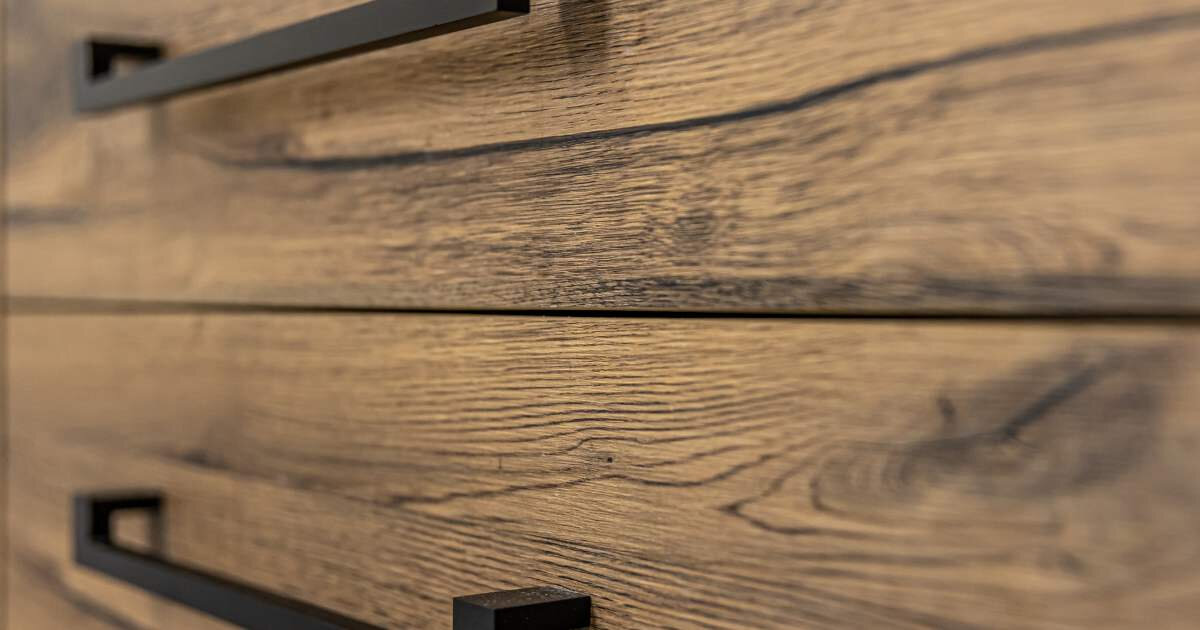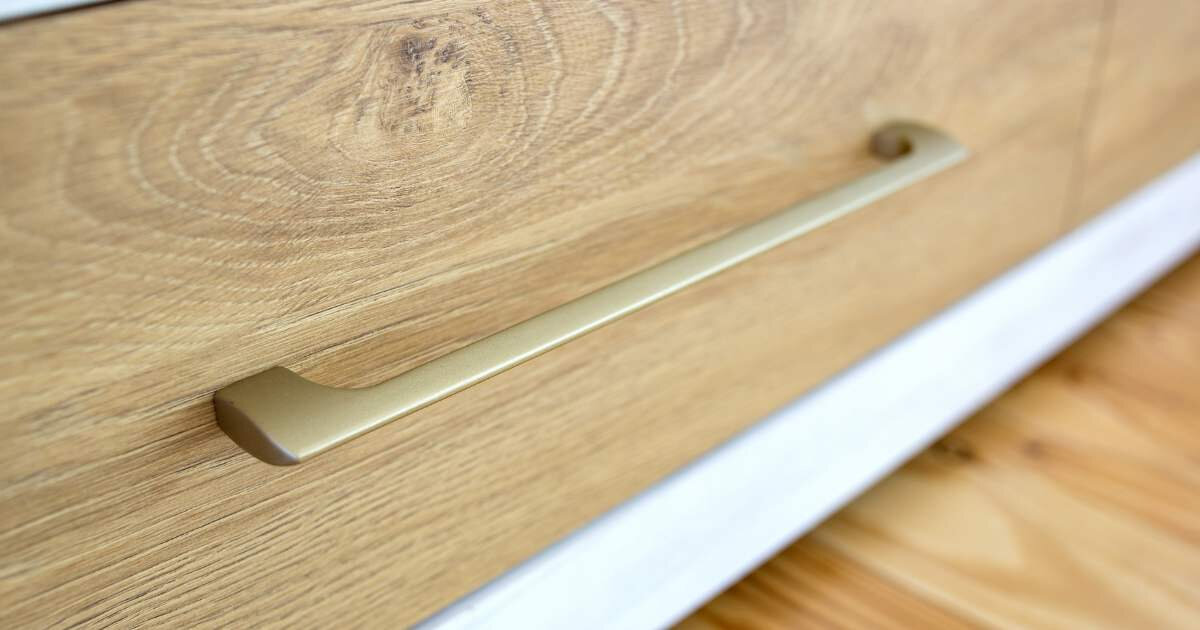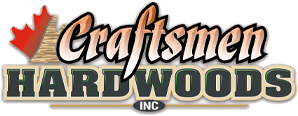Understanding Wood Grades: NHLA and CHPVA Explained

Updating the home with new cabinetry or woodwork can be a dream project for some. The glow of the finished product already shining in your eyes, it will be the pride and joy of your client’s home.
Selecting hardwood is an exciting next step. When you set out on the task, new terms will be thrown around as you walk through a forest of choices. You’ll have to make a decision considering the wood species, quality, grading, and so much more.
Craftsmen Hardwoods has extensive experience in selecting wood for cabinets and other woodworking projects. In this blog post, we're happy to share our expertise with you.
We will walk you through the most important selection criteria: wood grades. No matter which species you choose, grading makes or breaks it.
Craftsmen Hardwood, a wood products and services provider based in Drayton, Ontario, has grown significantly since its inception in 1996. We operate from a 35,000 sq. ft. warehouse in Drayton's Industrial Park. We are known for our dependable service and quality products. Whether you’re interested in learning more about woodworking or have a custom cabinetry project in mind, please send us an email or give us a call and let’s connect. We are happy to help!
Why Do We Need Wood Grades?
Standard wood grades make it easy for lumber producers and users to understand the characteristics of the grade they’re using.
Wood grades also keep the industry in check and ensure high-quality products are delivered to customers. Regulations are important in creating and ensuring lumber reliability.
Who Implements Wood Grade Requirements?
There are North American associations and regulatory authorities that create and oversee wood grade rules. These organizations help identify and certify lumber, accredit and supervise lumber grading agencies, and review grading rules and other related standards.
To understand how wood grades work in Canada, we will focus on the following organizations:
National Hardwood Lumber Association (NHLA)
The NHLA provides its members with hardwood industry standards and guidelines. The organization also provides a variety of member resources.
Canadian Hardwood Plywood and Veneer Association (CHPVA)
The CHPVA adheres to the internationally recognized American National Standard Institute for Hardwood and Decorative Plywood (ANSI/HPVA) rules to deliver high-quality products.
What are the Various Wood Grade Rules?
Ready to dive into the deep end of the rules? Before we decode anything for you, let’s talk about some defects found in lumber.

- Knots of any type
- Checks, splits, and bark pockets
- Pith and/or wane
- Worm or grub holes
- Bird pecks
- Rot or decay
- Sticker stain from kiln or air-drying sticks
Now for the grading systems.
NHLA Grading System
The NHLA uses grades based on the percentage of defect-free wood in a board, referred to as ‘clear-cuttings.’
- Firsts and Seconds (FAS)
The FAS looks at the board as two faces: the better face and the poor face. According to this grading level, you should be able to yield long, wide, clear cuttings, which are best suited for high-quality work.
In FAS, boards must yield a range from 831/3% (10/12ths) to 100% clear-wood cuttings over the entire surface of the board. The clear cuttings must be a minimum size of 3” wide x 7’ long or 4” wide x 5’ long.
- FAS one FACE (F1F or FAS1F) and Selects
This category is used when the grade indicates that the better face of a board meets all FAS requirements, while the poor face meets all the requirements of the No. 1 Common grade.
- No 1. Common
This grade is sometimes referred to as the ‘cabinet grade’ because of its adaptability to the standard sizes of kitchen cabinet doors in North America.
This grade applies to boards a minimum of 3” wide x 4’ long and will yield clear face cuttings from a minimum of 662/3%.
- No. 2A Common (No. 2AC)
This grade has been referred to as the ‘economy grade’ because of its price. It is also defined by boards with a minimum width of 3 inches and a minimum length of 4 feet, yielding at least 50% clear face cuttings. It’s characterized by a greater number of knots, blemishes, and colour variations compared to higher grades. This grade of wood is commonly used in parts of furniture where appearance is less important, such as non-visible sections or areas where the wood will be painted.
- No. 2B Common (No. 2BC)
This category has the same requirements as No. 2A Common, with the exception that all cuttings are only required to be sound (free from rot, pith, shake, and wane).
- No. 3A Common (No. 3AC)
To qualify for this category, you need a minimum clear percentage of 331/³% (4/12ths) and yield a minimum board of 3” wide x 4’ long, with minimum size cuttings of 3” wide x 2’ long.
CHPVA grading system
The CHPVA plywood grading system looks at the quality of both the veneer used on the face and back of the plywood sheets. The grading system uses combinations of letters and numbers.
The face/front grades are ranked best to worst using letters: A, B, C, and D. The back grades are ranked best to worst using numbers: 1, 2, 3, and 4.
Generally, plywood grades of AA, A1, A2, B1, B2, and C2 are considered good two-sided products.
Here’s a look at plywood grades for the plank face:
AA-Grade Plywood
Sheets graded as AA are premium grade and are typically used for architectural panelling and interior projects or high-end furniture pieces.
A-Grade Plywood
This type of plywood has minimal defects and a smooth, paintable surface. This grade works well for cabinetry, furniture, and decorative panelling.
B-Grade Plywood
This grade has slightly lower quality face veneer than the previous ones. You might see small knots or other minor imperfections, but the sheet should be good for use in projects where appearance is important, not critical.
C-Grade Plywood
If price is priority and the finished product isn’t decorative, then this grade of plywood can work.
D-Grade Plywood
This is the lowest quality veneer because the face has numerous defects (knots and open defects are putty-filled) and a rough surface. But don’t write it off completely. The D-grade plywood is practical for various uses like wall and ceilings in paint grade.
Wood veneer back grades
- Grades 1 and 2 are approved for sound surfaces with all openings in the veneer repaired, except for vertical worm holes not larger than 1/16″.
- Grade 3 can pass for a sound surface with some open defects, repaired splits, joints, bark pockets, laps, and knotholes if that’s what the user wants.
- Grade 4 comes with some open defects, like knotholes up to 4″ in diameter. However, open splits and joints are limited by width and length. The veneer in Grade 4 does not necessarily need to be from the same species as the face veneer.
Professionals will probably breeze through this information, but cabinet-making novices may need some guidance.
We are here to support you every step of the way. Whether you’re interested in learning more about these lumber rules or have a custom cabinetry project in mind, please send us an email or give us a call and let’s connect. We are happy to help!


